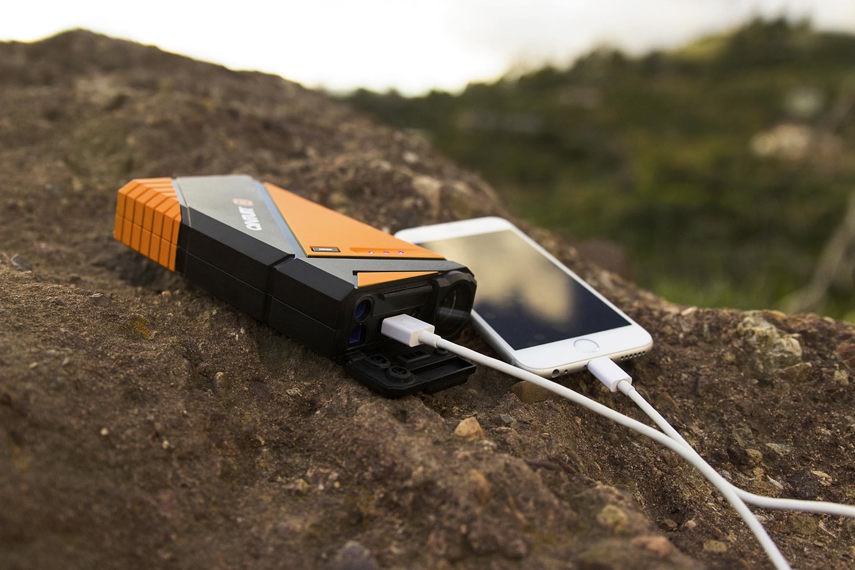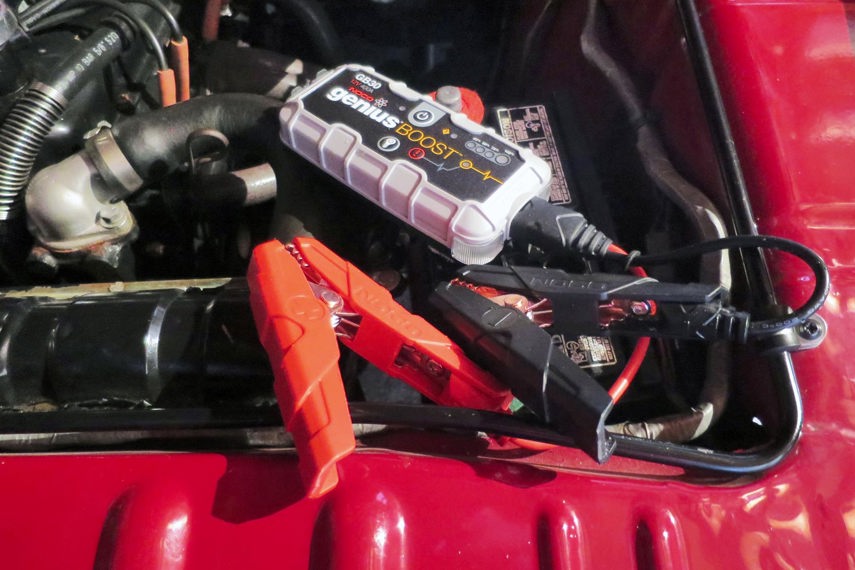Regardless of what season it is, getting stranded while driving due to a dead battery is a situation that can cause Canadians unneeded stress. This is especially true if you are driving in some of the more remote parts of our vast country, where roadside assistance or cellphone service aren’t available. While jump-starting an electric vehicle (EV) is a different process, many drivers of gas-powered cars already keep a set of jumper cables onboard. Some drivers, however, are not comfortable with the process of getting a boost from a stranger, waiting alone for help, or possibly paying inflated rates to get a boost from a tow truck company, especially if they are driving in an area where trusted friends or family can’t be called upon for help.
Just as it is good practice to have the proper emergency supplies in your car or know how to change a flat tire on your own, having an emergency battery booster pack can save you time and money while getting you back on the road in a safe and timely fashion.
How Are Booster Packs Different Than Portable Power Packs?

Although they look similar and have similar-sounding names, to be clear, a booster pack is not the same as a portable power pack.
The battery in a portable power pack is designed to provide a low amount of power over extended periods to get you through a power failure or deliver portable power for the cottage, camping, or ice fishing. A portable power pack may provide enough juice to jump your car’s battery if it’s slightly discharged, but that can also shorten its lifespan.
The battery in a booster pack is designed to deliver the maximum amount of power but for only short bursts so that it can jump-start your vehicle’s dead battery.
What to Look for When Buying a Booster Pack
Not all booster packs are the same, so you’ll want to do some research to make an informed decision on which one to buy to place in your car.
Although booster packs are rated for their peak amp rating, this number doesn’t indicate their ability to start a vehicle with a dead battery. Instead, look for the pack’s cranking amps (CA) rating. A standard minimum of 225 CAs is usually required to start a vehicle with a four- or six-cylinder gas engine. If you have a larger engine, a diesel engine, or want more jump-starting power, look for a booster pack with 400 or more CAs – the higher the CA, the better the battery.
Some booster packs have built-in flashlights and/or USB ports that can be used to power and charge small electronics as well.
How to Jump-Start Your Car with a Booster Pack

Most drivers are familiar with the process of jump-starting a car. It involves connecting your vehicle’s dead battery to the working battery of another vehicle. Using a booster pack is a similar process but more convenient and accessible. Just a reminder: before heading out on the road, ensure your booster pack is fully charged. For jump-starting your vehicle, it should be charged twice a year, and you’d be wise to charge it in the fall and spring.
Now that your booster pack is ready, here are the five steps to safely jump-start your car’s battery:
Turn Your Car Off
Even though your dead battery isn’t supplying enough power to crank over the engine, turn off all the car’s lights and electrical accessories before connecting the booster pack’s cables. This will prevent any potential damage to the electrical components of your car and the booster pack.
Place the Booster Pack in a Safe Place
After opening the hood to locate the battery terminals, find a spot either on the ground or in your car’s engine bay that allows for the booster pack’s jumper cables to easily reach the discharged battery in the car. If you are stranded on the side of the road, place the booster pack on the passenger side of the vehicle so that you are not standing near passing traffic on the driver’s side of the car.
Connect the Jumper Cables

Like you would if you were using another car for a jump-start, connect the red (positive) booster pack’s clamp to the positive terminal (red) of the dead battery. Next, attach the black (negative) jumper clamp to an unpainted, metallic engine component or chassis grounding point (not the negative terminal of the dead battery).
Turn the Booster Pack On
Once the clamps connected from the booster pack to the car are tightly secured, you can safely start the booster pack. Wait a few moments for a charge to get going.
Turn Your Car On
Now, here’s the moment of truth: try starting your vehicle. If the engine does not start on the first go, but you can hear a cranking sound, wait 10 seconds before trying again. This allows your car’s battery to get the maximum current from the booster pack. Follow the jumper pack’s instructions for the best cranking times. If the jump-start works, you’re all set to go. At this point, you can turn off the booster pack and disconnect the cables. Go for a long highway drive to charge up your battery so you don’t have to boost it again.
Not All Dead Batteries Can Be Boosted

In certain situations, even the best booster pack won’t be able to jump-start your car’s battery.
Especially in Canada, due to extreme outdoor temperatures or the age and condition of your car’s battery, it may take a few attempts to get your car started to run under its power. If not, you’ll likely need to replace your old battery with a new one.

